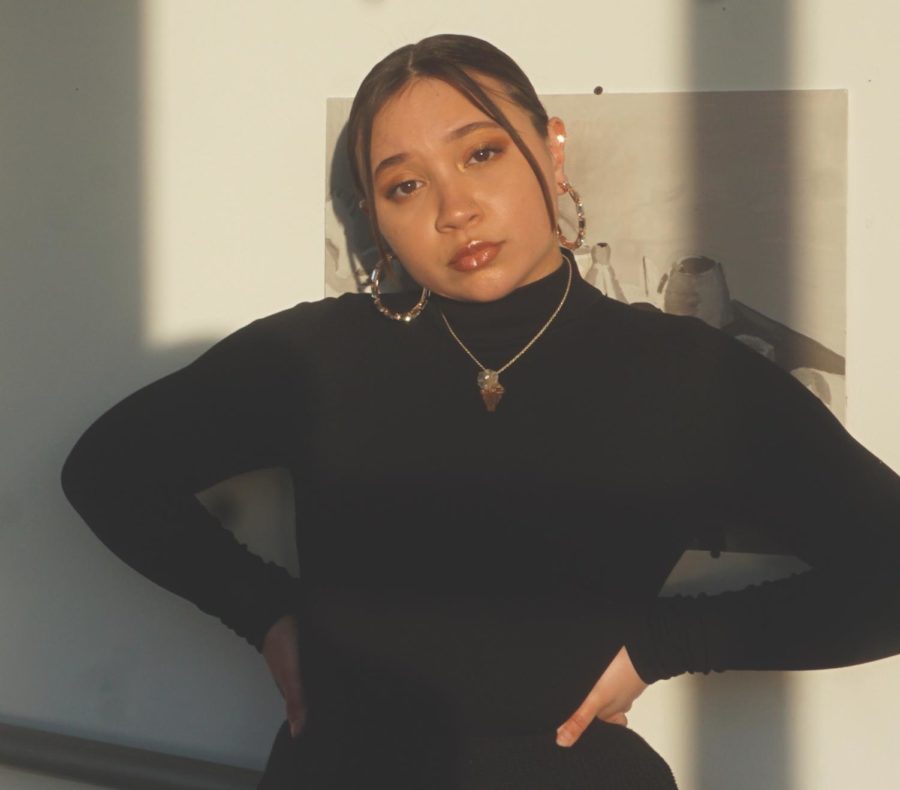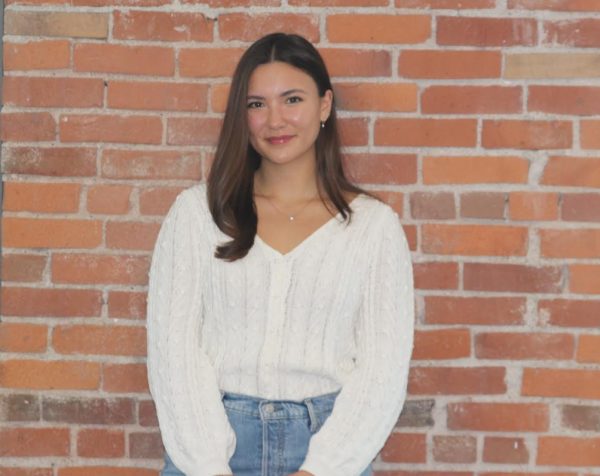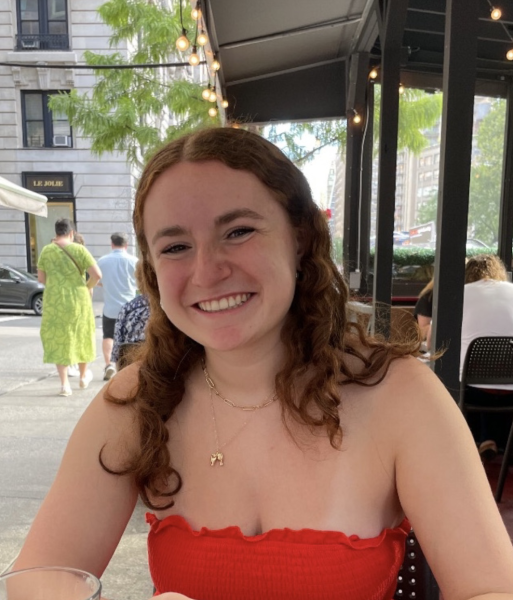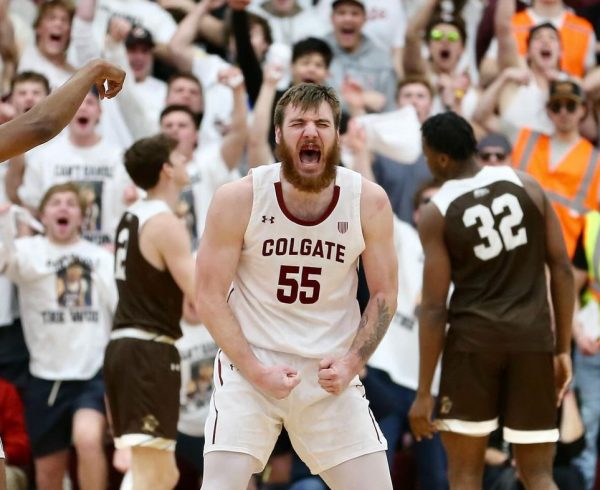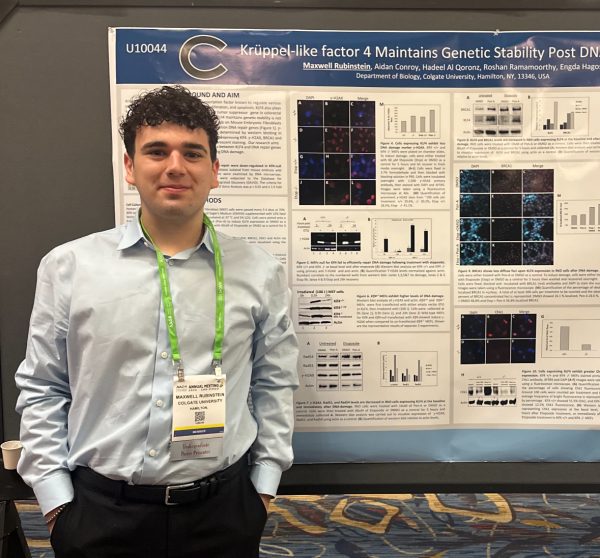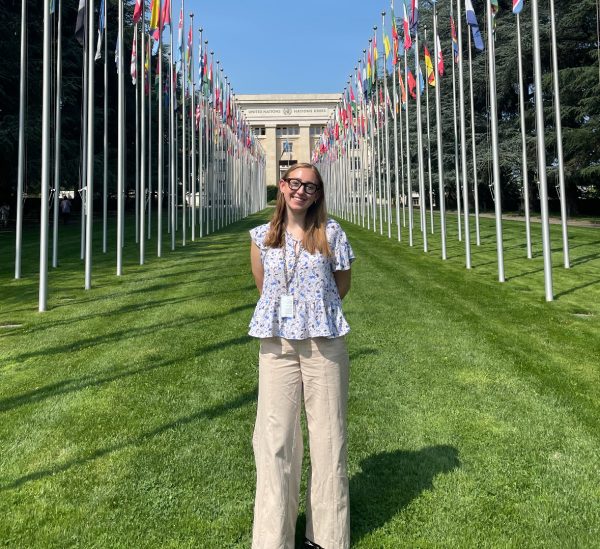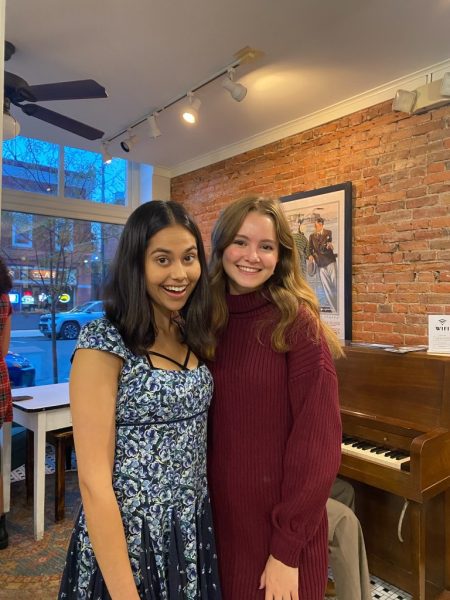Keilani Blas: Art As Social Justice
Scrolling through Instagram, one might encounter a multitude of educational materials, highlighting important topics in an accessible, easily digestible and visually appealing manner. These are the digital images that Keilani Blas has learned to master, and her passion for art and educating others on social issues is enabled to shine through these images.
A junior from Atlanta, Georgia, Blas explains being at Colgate as an “accident.”
“I went to an underfunded, under resourced, really shitty high school in Atlanta. Which was good. I’m glad I went there. I kind of ended up here by accident, as a first generation college student,” Blas said.
Blas is concentrating in sociology, studying the language for social justice issues that she’s passionate about.
“Since going to college, art has taken a little bit of a back seat,” Blas said. “I spend most of my time here working on and thinking about systemic racism and oppression … I was more concerned about learning about social issues, ways to find data and ways to use language to talk about it, in a way that is seemingly more solid and firm.”
For Blas, art classes don’t fit into her artistic passion.
“I hate art in an institutionalized setting. I hate it. I hate being given assignments. I want to do what I want to do and if it’s not what I want to do, then I really don’t want to do it … It doesn’t fit my body as an artist,” Blas said.
Although Blas does not study art, she thrives using her artistic appreciation of education and teaching others. She is deeply involved on campus and essential to a multitude of organizations, which has not gone unnoticed to her peers, recently being selected as a member of the Senior Honor Society’s class of 2022. Blas is also a lead ALANA ambassador, a curatorial assistant for the Longyear Museum of Anthropology and involved with the Colgate Student Coalition. In each role, her artistic vision is highly valued.
Currently, Blas is helping and directing the organization of the ALANA multicultural fashion show. Although she does not have a traditional background in fashion, she loves fashion and is passionate about its celebration.
“I’m not a creative director. I’ve never planned something like this; I don’t have a background in fashion, I’m from Atlanta I love to thrift, I love fashion, but I’m not really immersed in that. Although, I do know that there are a lot of amazing students on campus that stunt, that look amazing and I love that. I feel that fashion that is different or fashion that is not part of the cultural norm is something that is not celebrated enough,” Blas explained.
Originally, the fashion show was supposed to consist solely of traditional wear, but Blas challenged this because she saw it as limiting.
“Some communities, families or individuals have been torn away from their roots and heritage. If the fashion show only had traditional wear, this would exclude those bodies. But those who have been torn from their heritage still express themselves in fashion in creative and beautiful ways,” she said. “What I hope this fashion show to be is a humanizing experience, a celebratory experience, an experience that highlights artists, the diversity of bodies, which isn’t really highlighted that much on this campus, body positivity, diversity, all those kinds of things.”
Blas wants the fashion show to be as celebrative and inclusive as possible, but also recognizing the historical oppression behind the cultural diversity.
“If the fashion show is supposed to celebrate diversity, it needs to have an equitable base in which all creatives can participate and celebrate themselves. The fashion show has to recognize that heritage is something that has been stolen and oppressed from marginalized communities. And, the fashion show also has to recognize that those communities are movers and shakers in fashion culture who should be celebrated and recognized,” Blas explained.
In addition to her work on the fashion show, Blas also makes educational digital images for the ALANA Instagram and the other organizations she’s involved in, which has been a new and challenging endeavor for her, with little previous experience in digital art before, but it is one that has become foundational to her experiences in organizations on campus.
“I’ve become recently interested in creating those little educational materials on Instagram that can teach those things that are accessible to everybody that are easily shared. [They] are important and a good way to start the conversation,” Blas said.
She continues about the importance of these materials, explaining that it gives those without a higher education the means to understand these significant topics.
“When making educational materials on Instagram, I’m using pretty backgrounds, pretty fonts, easily accessible language and imagery to talk about difficult topics like racism, misogyny, misogynoir, problems in the educational system, problems with reproduction health, all of these topics, that are so hard to talk about and are seemingly inaccessible. These kinds of topics are only really located in higher education, and there is a lot of language that can prohibit communities that don’t have access to have that kind of vocabulary.”
These materials are easily shared, easily understood, and a great way to start conversation that need to be had.
“Everything I do for ALANA and for the Longyear museum and everything I work for, I bring a lot of visuals into it, a lot of thought into color and a lot of thought into how I’m presenting ideas to people in a way that is accessible and beautiful.”
Blas takes on art in a transformative and untraditional way, using it to help educate others on the tremendously important topics that she is so passionate about, integrating social justice as an art form into everything that she does.
“Art for me right now, in a sense, overall, is highlighting areas of systemic oppression and education of others and bringing people together in ways that are accessible and beautiful, and destigmatizing conversations that need to be had, and making it in ways in which people can feel comfortable with it, including myself. It’s an education process for me and everybody around me.”
Jessica Argento is a senior from Westchester, NY concentrating in international relations and minoring in economics and sociology. She has previously served...


